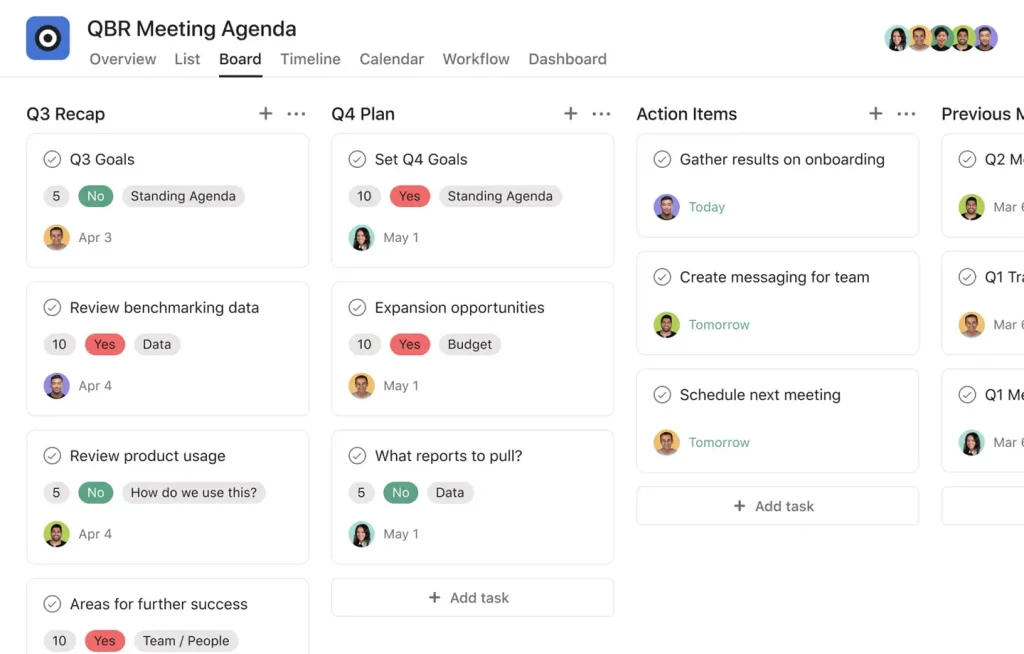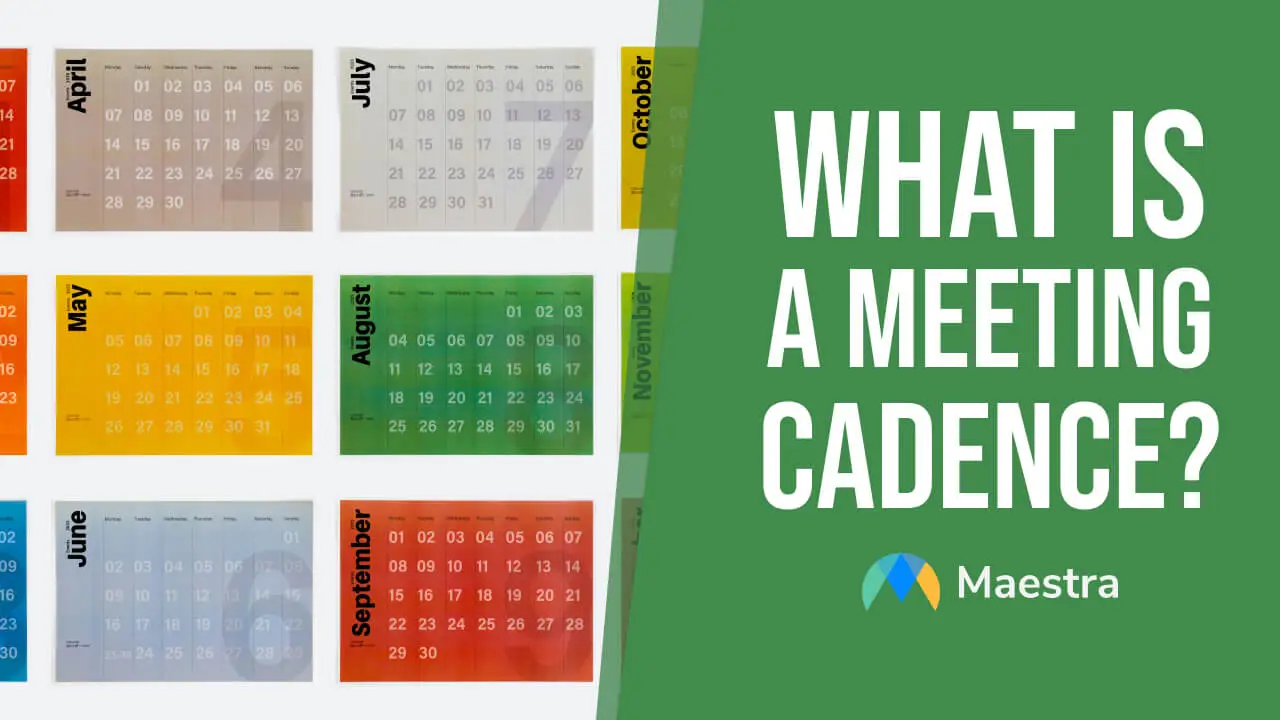How to Run a Quarterly Business Review (QBR) + 5 Templates

In business, the key to improvement lies in consistently assessing performance and adapting strategies accordingly. Regular evaluations, such as a quarterly business review, allow companies to reflect on past challenges and achievements, ensuring that lessons are learned and applied.
In this blog, we will:
- Explain what a quarterly business review (QBR) is and highlight its importance
- Guide you through how to conduct a QBR step-by-step
- Suggest 5 best practices for effective QBRs
- List 5 QBR templates for maximum efficiency
Let’s get started.
What is a quarterly business review?
A quarterly business review (QBR) is a periodic meeting between a company and its clients or teams to evaluate progress from the past quarter. Held every three months, these meetings are common in customer success and business development contexts.
The primary purpose of a QBR is to assess key metrics, and understand where things stand and where they need to go. It’s a chance to celebrate successes, address challenges, and collaboratively outline actionable next steps.
Quarterly business reviews are invaluable for maintaining focus and clarity in business objectives and relationships. They help organizations refine their approach to achieving goals, ultimately contributing to long-term business growth.

How to Conduct a Quarterly Business Review
We will explore the QBR process in three stages by emphasizing what you must do before, during and after the meeting for a successful session.
Before the QBR
How well you prepare before the quarterly business review will determine the success and productivity of the session.
Transcribe QBRs in Real-Time
During the QBR
By following the quarterly business review format (achievements, key metrics, next steps), you can facilitate productive and result-oriented conversations that are grounded in data.

After the QBR
The post-QBR phase plays a critical role in maintaining momentum, so it’s essential to follow up on key takeaways and monitor progress toward achieving the set goals.
5 Best Practices for Quarterly Business Reviews
In addition to the steps outlined above, these five best practices will make your quarterly business reviews more goal-driven and boost engagement.
Try AI-Powered Live Captioning
Live captioning during a quarterly business review can improve accessibility and help everyone fully engage with the discussion. Utilize Maestra’s free AI live transcription tool to generate a live transcript in 125+ languages as the meeting happens. Moreover, feel free to translate simultaneously and provide captions in another language, especially if the meeting involves a diverse group of participants.
Use a QBR Template
Using the same quarterly business review template will provide consistency between meetings. With a predefined structure, participants will become accustomed to the QBR format, which enhances their ability to engage meaningfully. Additionally, a QBR template will save time, as it eliminates the need for reinventing the meeting structure each quarter, allowing more focus on the content.
Focus on Solutions
While it’s essential to acknowledge challenges during the QBR, the emphasis should be on finding strategies to overcome them. Use metrics and analytics to identify potential solutions instead of relying solely on opinions and assumptions. Shift the focus to collaborative brainstorming and decision-making to come up with solutions that are both realistic and practical.

Don’t Lose the Sight of Long-Term Goals
Although QBRs focus on reviewing the past quarter, it’s important to align discussions with long-term business objectives. If you’re conducting a QBR with your customers or clients, emphasize how your solutions or services contribute to their broader growth strategies. For team-focused QBRs, illustrate how quarterly targets connect to overarching company goals.
Encourage Open Dialogue
A transparent, inclusive environment can uncover great ideas that might otherwise go unspoken. Encourage participants to challenge assumptions constructively and propose alternative viewpoints. Additionally, use open-ended questions to invite creative solutions, and recognize contributions publicly to motivate ongoing engagement.
5 Great Quarterly Business Review Templates
With the following diverse tools, you can tailor your QBR meetings to your business’s specific needs while enhancing productivity and collaboration.
ClickUp
From presentations to reports, ClickUp offers a wide range of quarterly business review templates. The platform also recommends SlideTeam’s Quarterly Business Review PowerPoint Template and Template.net’s QBR Word Template.
Mural
With Mural’s Quarterly Business Review Template, you can measure your progress at regular intervals easily. Start by defining your primary business aims (aka the value your business offers), evaluate how well you achieved current QBR goals, and finally plan your upcoming goals for the next quarter.
Asana
Asana’s QBR Meeting Agenda Template will save a lot of time and make your sessions more productive. It has cool features such as “timebox agenda topics”, which give presenters time limits to ensure discussions don’t run over.

Figma
Figma’s Quarterly Business Review Template is ideal for using in whiteboard sessions. The template has several styling and collaboration features, such as shapes, connectors, and little notes that will allow you to showcase branded content.
Pitch
This Quarterly Business Review Template by Pitch has a minimalistic, clean design that will help you focus on what really matters. It is clearly divided into sections of Performance, Learnings, Next Steps, and Q&A to set a solid foundation to meet future goals.
Frequently Asked Questions
Who attends a quarterly business review?
The attendees of a QBR often include team leadership, account managers, and customer success managers. Clients and vendors can also participate to provide insights or receive updates. Their collective input helps shape actionable strategies for the upcoming quarter.
What is the agenda for a QBR?
A quarterly business review agenda typically covers past performance, key achievements, and areas for improvement. It also focuses on setting goals for the next quarter and developing strategies to meet those goals. The agenda may conclude with a Q&A session to wrap up the discussion with clear takeaways and accountability.
What questions should I ask in a quarterly review?
Effective quarterly business review questions focus on analyzing results, understanding customer needs, and setting goals. You might ask “How satisfied are our clients with the services/products provided, and what feedback have we received?”. Another good question to ask is, “Are there any emerging market trends or new opportunities that we should explore in the next quarter?”.
How do you present a quarterly business review?
When presenting a QBR, begin by providing an overview of the key performance data and progress made. Next, address any challenges faced and how they can be overcome in the next quarter. Make sure the presentation is visually engaging, using charts and graphs to support main points and actionable next steps.
How to write a quarterly business report?
When writing a QBR report, start with a comprehensive summary of the past quarter’s performance, including successes and areas for improvement. Then discuss any issues that impacted performance and suggest ways to address them. Finally, outline the goals for the next quarter and the strategies to achieve them.
Summary
This blog explained what a quarterly business review is while covering its purpose and importance. It provided actionable steps and tips on how to run a QBR effectively, along with 5 useful templates to increase productivity.
Here are our three golden rules for successful QBR meetings:
- Present the data in a visually appealing, easy-to-understand format so everyone can quickly grasp key takeaways.
- Make sure that action items are realistic, strategic, measurable, and specific.
- Foster open dialogue among participants to encourage rich insights and collaborative problem-solving.
Embrace these tips and the others mentioned in this blog to run impactful QBRs that lead to lasting results and growth.


